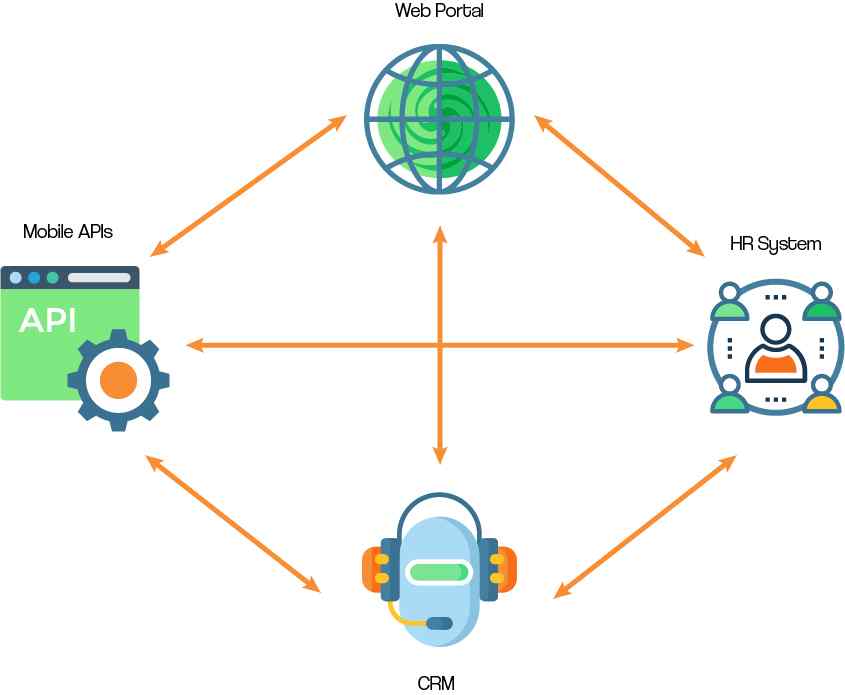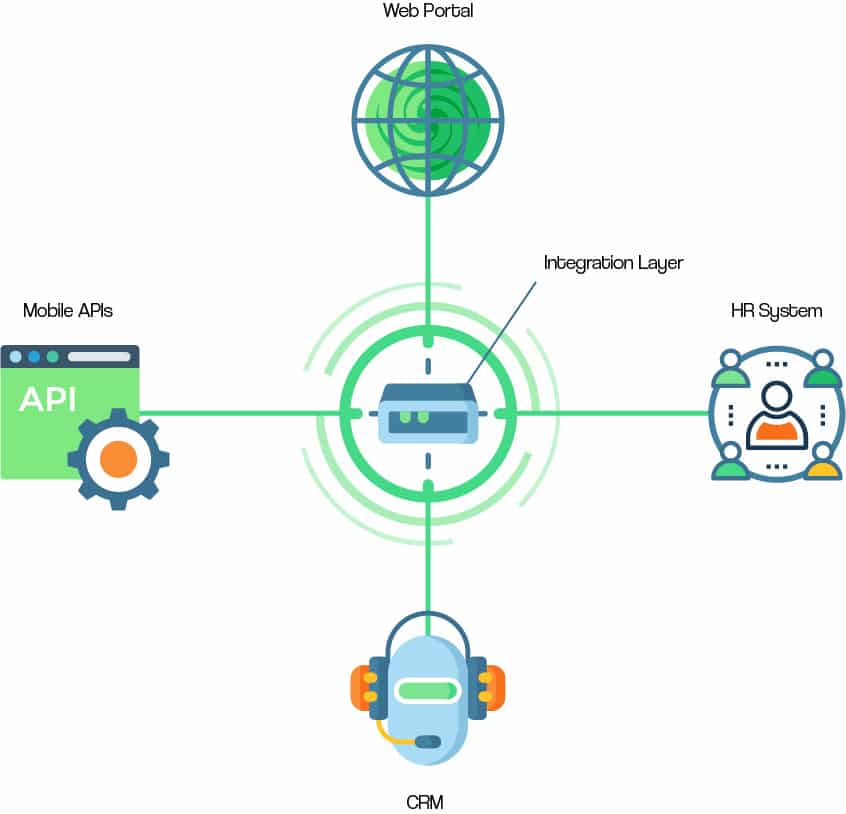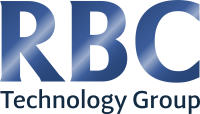RBC Technology Group work with customers to plan their Integration Strategy
In the recovery from the current crisis, many companies are looking to rationalise, update, and integrate their systems to increase efficiencies and decrease cost. If this is you, you will need an integration strategy.
Any systems and application modernisation project requires a strategic stage to look at the best way to tackle the systems integration and also provide a single view of all data or a ‘business dashboard.’
Consider a project needing a central portal, integration with customer support systems, integration with help desk systems, integration with HR systems, extensibility, flexibility and all fronted in a single view often hosted in the Cloud.

In the configuration above, the design is called a ‘point-to-point’ solution; each major system talks to the others when needed. This is how many legacy systems are designed. These types of solutions are challenging to maintain, extend, and change and this is why:
Fundamentals:
- The solution is overly complicated. For example, the HR system not only receives requests but may also need to get information from the CRM system. This means the HR system needs to know specific details of the implementation of the CRM system and implement calls to their APIs. This effort is repeated across all the other systems in the point-to-point solution.
- There is little or no flexibility in this solution
- A major amounts of time is committed to the ‘How to connect’ rather than focused on the ‘What is being sent.’
Implementation/Maintenance:
- Implementation takes a lot longer than expected due to code built in the mobile APIs that will need to be duplicated for the HR system when they want to talk to say the CRM.
- Login credentials across the systems are complex, and a Single Sign-on impossible.
Flexibility:
- To swap the HR system out and replace it with another is very hard.
- You can’t disconnect or update components between systems without risk; each is interlinked. Different versions, upgrades of individual systems may cause havoc across the platform. Thus, most platforms of this nature stay as they are from day one.
Is Moving to the Cloud the Solution?
The Cloud allows greater flexibility with standardisation of Interfaces.
API Management (APIM) product offerings, where your solution APIs can all be tested and integrated in a controlled manner, allow for protocol translation, single sign-on, auditing, and tracking, etc. An Integrated Solution has many moving parts, and with the advent of the Cloud, this becomes even more prevalent.
A Hybrid Cloud Solution (where some components are on-premises and some in the Cloud) is a great choice. If we take the cloud solutions on offer, a blended approach is ideal, being a combination of On-Premises connected to Cloud-Based Power Apps.
Whatever the combination of software is chosen, the following points need to be satisfied at least:
- Logging, auditing, monitoring data, and publishing business activity to output analytics is critical.
- Transaction support across multiple disparate endpoints – e.g., CRM and HR systems.
A Functioning Integrated Solution with an Integration Layer looks like this:

An Integration Layer ensures:
- Each interface (or ‘connection’) is performed once. Building up a stable system based on the high reuse of interfaces.
- Extending the solution involves replacing one component and updating the Integration Layer.
- Maintain flexibility as new components can be slotted in with the Integration Layer
- Increased response time to markets as new projects can reuse many of the existing interfaces.
- Deployments and updates are more straightforward as the Integration Solution can be isolated as required.
- A single view or dashboard is possible for management reporting.
What is clear…businesses need a clear-cut integration strategy and tools to help them integrate fast, incorporate new Cloud offerings, and get back into operation…fast!
As part of the systems integration strategy, RBC group can review all company manual processes and automate any repetitive steps that would otherwise be performed by people, freeing them up for more productive tasks. This is enabled by the docs2me product, see the doc2me AP Automation webinar here.
READING SUGGESTIONS:
















